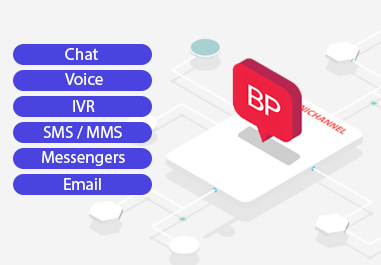Conversational interactive voice response (IVR) makes support faster and more personalized for clients than traditional IVR. And in an age of chatbots and email, 42% of people still prefer phone calls for customer support. Personal service and a personalized customer experience boosts conversions, and there’s nothing more personal than talking to a human.
But humans aren’t always available to clients. Traditional IVR attempt to fill that gap, but its keypad menus aggravate already frustrated clients. Traditional IVRs suffer from issues like a rigid structure of conversation, lack of flexibility in the customer journey, and long wait times to get to the resource that you want. In this guide, you’ll learn how conversational IVR solves the the flaws of a traditional IVR and personalize the customer conversation.
What is Conversational IVR?
Conversational IVRs use voice commands to let callers do self-serve customer service on the phone and understand the context of the call—not just button presses. They use advanced technology to give automated phone support without sacrificing quality.
For example, Conversational IVRs can be utilized to authenticate users utilizing voice biometrics. The user can authenticate themselves in the system by saying out loud identification information, like ID numbers and names, and the IVR will understand this and give the user access to further self-service if they are detected as an authorized user. This is done through integrations with best-of-breed AI from Google, Microsoft, IBM Watson.
Overall, the technology represents a huge step forward in customer support technology. And omnichannel IVRs like Bright Pattern’s lead the way by integrating IVR into a broader toolset.
Traditional IVR Meaning
Traditional IVRs are regular touch-tone-based voice systems. They lack the automated features that make conversational IVRs better, and have almost no ability to adapt to customer needs and take longer to use. For instance, if a customer presses the wrong button on a legacy IVR menu, they’ll have to start over from the top of the menu.
They also lack personalization options, making customers feel unimportant. And with 80% of people favoring firms with personalized service, traditional IVRs can cost companies serious income.
Why Conversational IVR Beats Traditional IVR
Traditional IVRs can’t handle complex dialogue like modern, conversational ones can. Conversational IVR lets customers describe their problems naturally and receive human-like responses. Conversational IVRs can accurately parse human speech and personalize the experience, as opposed to a rigid traditional IVR that leads the customer down a rigid path where they can’t directly get to the resource they want to get to.
But complex dialogue is only the beginning of conversational IVR benefits! Here’s how conversational IVR beats traditional, elevating customer service:
Enhanced Speed and Efficiency
Conversational IVRs resolve calls faster than regular IVRs in the same period. Conversational IVRs reduce effort and friction compared to traditional IVRs by providing flexibility in the moment for customers and being able to directly lead the call to the right resource or the best-qualified agent. Customers can speak freely through a conversational IVR, reducing frustration and increasing personalization.
Clients using traditional IVRs waste tons of time slogging through slow menus with dial tones. Conversational IVRs let clients talk their way through menus or ask for the right department right away.
Cost-Effectiveness
Typical inbound customer calls cost about $5.50 with all factors considered, and most of that comes from the cost of live agents.
Additionally, people hate slow, outdated IVRs. In fact, over half of consumers have abandoned transactions because of traditional IVRs.
Dislike of traditional IVR makes customers want to talk to humans—your firm’s biggest customer support cost. In contrast, conversational IVRs solve problems quickly, so clients don’t need human help as much.
And Conversational IVR also allows companies to automate many calls entirely, meaning huge savings on inbound. Even when they can’t automate calls, it speeds up resolutions, resulting in more satisfied clients.
Improved Customer Retention
Consumer dislike of old-school IVR results in churn. Customers hate the slow, dull process of mashing buttons through unresponsive menus. 3/5 of customers say brand loyalty depends on support quality. The personalized care that comes with a Conversational IVR boosts customer outcomes, increasing their loyalty.
Add conservational IVR to your contact center, and you’ll see an instant churn improvement.
Easier to Scale
Conversational IVRs are infinitely scalable. As your business grows, you’ll meet customers who speak different languages. Conversational IVRs are also able to know other foreign languages and understand other languages through integrations with AI vendors that support foreign languages.
And they are quick to deploy when they’re part of a contact center as a service (CCaaS). With Bright Pattern’s CCaaS, you can deploy your conversational IVR in less than two months.
Better Brand Image
When calling support, consumers hate dealing with a dull, outdated traditional IVR system. So when customers struggle to navigate clunky voice menus, they’re likely to find a competitor instead.
Conversational IVRs help customers find what they need over the phone quickly. Quick, easy resolutions lead to a quality-first brand image and increased customer loyalty.
Boosted Customer Satisfaction
People used to hate using automated voice systems, but the “can you repeat that?” systems are gone, replaced by intelligent ones.
Virtual assistants like Siri and Alexa changed perceptions of automated voice response systems. Today people love virtual assistants able to meet their needs intuitively.
By integrating voice response into your contact center, you’ll use the same tech that made Siri famous.
Add Conversational IVR to Your Contact Center Now
As you can tell, the benefits of conversational IVR blow traditional IVR out of the water. The technology is more cost-effective, easier to scale, and more customer-friendly than old options. Conversational IVR means happier customers, lower churn, and higher profits.
So if your contact center doesn’t have conversational IVR, you’re losing money. Schedule a demo with Bright Pattern today, and get yours online in less than two months.





